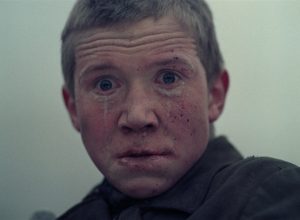Elem Klimov’s historical epic is a deranged and frightening showcase of human evil
A common criticism aimed at modern war films is their general disregard for historical accuracy. Films like Pearl Harbor or Enemy at the Gates, while entertaining, are often embellished or glamorized in order to make the subject matter more palatable for mainstream audiences. The fact of the matter is that war is messy. Lives are lost, cities are destroyed and soldiers and civilians are left with lasting psychological effects. Rarely will a film seek to capture the absolute horror of combat in a truthful and authentic manner. There are, of course, some exceptions, one of which is the 1985 Belarusian film Come and See.
Set during the Nazi occupation of Belarus, a landlocked Eastern European country between Poland and Russia, Come and See tells the story of a young teenage partisan named Flyora. Against the wishes of his mother, Flyora joins the Soviet resistance movement and soon becomes entangled in a hellish conflict.
Director Elem Klimov has stated that in making this film, he wished to properly convey the sensory experience of war to the viewer. To achieve this, the director consulted Soviet writer Ales Adamovich to collaborate on the film’s script. Adamovich fought as a partisan during the Second World War, and his book I Am from the Fiery Village was used as the inspiration for the film’s events.
The director’s characterization of Come and See as a sensory experience is an apt one. Whether it be the terrifying reverberation of a dropped bomb or the ominous droning of fighter planes circling the sky, the film’s sound design shakes you to the core. The imagery is similarly harrowing, and the camera will often linger on disturbing scenes, amplifying feelings of discomfort. Fans of Ari Aster’s Hereditary and Midsummer will find these techniques very familiar. The result is an overwhelming and visceral journey into the depths of depravity that will affect you profoundly.
Visually, Come and See is distinct for its frequent use of POV shots. This was a purposeful decision made by Klimov and cinematographer, Aleksei Rodionov, to place the audience at the center of the events unfolding. The close-ups of the actors directly addressing the camera are incredibly impactful and make the characters’ anger, fear and anguish feel all the more real. It’s a reminder that war is a human conflict first and foremost, and that there were very real people affected by the ramifications.
As the film progresses, we watch as protagonist Flyora gradually undergoes a stunning visual transformation, with his hair turning grey and his face becoming lined with wrinkles. Flyora’s transformation is not only a physical delineation of the effects of war, indicating the immense stress he is undergoing, but it also represents his loss of innocence. Flyora begins the film as an eager boy ready to join the Soviet resistance, but by the end he is left battered and emotionally scarred, robbed of his youth.
The film went through numerous delays during production, with the USSR’s State Committee for Cinematography, at one point rejecting it, believing the film promoted an “aesthetics of dirtiness.” Nearly 35 years later, Come and See has garnered a reputation among critics as being one of the greatest and most accurate depictions of war ever put to film. It is a haunting representation of the indelible effects of war and an assessment of mankind’s capacity for evil. It is a gut-wrenching watch from start to finish, but one that should absolutely be seen.
Come and See is playing at Cinema Moderne as part of their “M: Les Maudits” Series dedicated to cult and genre classics. Screenings take place on Feb. 28 at 9 p.m. and March 8 at 7:15 p.m. Tickets are available online or at the box office. For more details visit cinemamoderne.com





